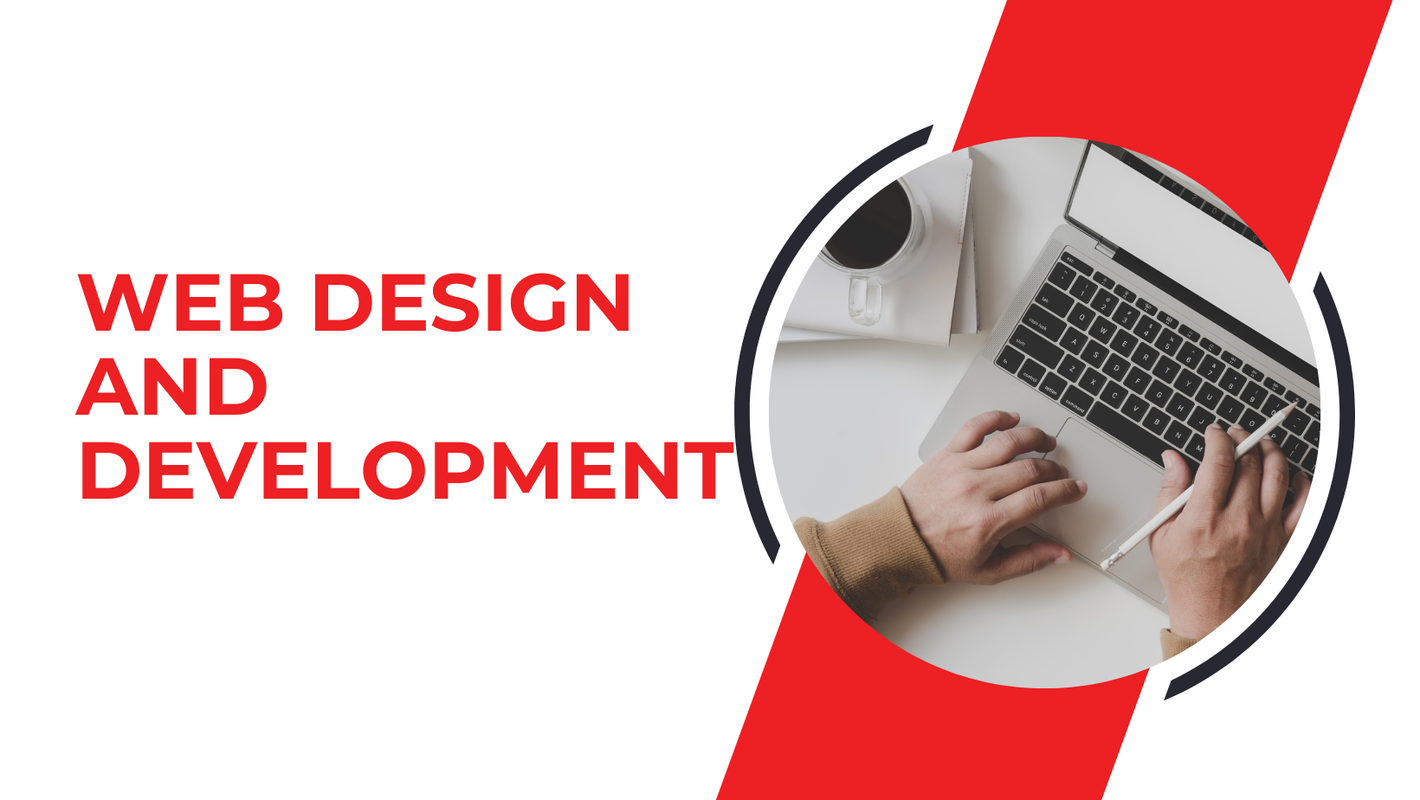In today’s digital-first world, a website is more than just a digital address; it’s the face of your brand, a powerful marketing tool, and often the first point of contact between you and your customers. A well-designed and developed website can set your business apart, establish credibility, and drive growth. In this blog, we will explore the essential aspects of web design and development, the benefits, and the steps involved in creating a stunning, functional website.
What is Web Design and Development?
Web design and development refer to the process of creating a website that is visually appealing, user-friendly, and functional. While web design focuses on the aesthetics and user experience (UX), web development handles the coding and technical aspects that make a website work.
- Web Design: Involves planning and creating the visual layout, color schemes, typography, and overall look and feel of the website.
- Web Development: Involves coding the website using languages like HTML, CSS, JavaScript, and back-end technologies to ensure the site operates smoothly.
Key Elements of Web Design
A successful website combines various elements of design to ensure a seamless user experience. Here are some of the critical components:
a. Layout and Structure
The layout is the foundation of your website. It determines how information is presented and guides the user journey. A well-structured layout ensures easy navigation, helping visitors find what they’re looking for quickly.
- Grid Layouts: Organize content neatly, creating a balanced and readable design.
- Responsive Design: Ensures the website looks great on all devices, from desktops to smartphones.
b. Color Scheme
Colors evoke emotions and can significantly impact user perception. The right color scheme aligns with your brand identity and enhances the overall aesthetics.
- Consistency: Stick to a primary color palette that reflects your brand.
- Contrast: Use contrasting colors for readability and to highlight important elements.
c. Typography
Typography plays a crucial role in communicating your message. Choosing the right fonts, sizes, and spacing enhances readability and sets the tone for your website.
- Readability: Use easy-to-read fonts like Sans-serif for body text.
- Hierarchy: Different font sizes and styles guide users through the content.
d. Imagery and Graphics
High-quality images, illustrations, and icons make your website visually engaging. Ensure that all visuals are optimized for web use to maintain fast loading speeds.
- Stock vs. Custom: Use custom images when possible to make your website unique.
- Optimization: Compress images to improve loading times without sacrificing quality.
e. User Experience (UX)
UX design focuses on creating a website that is intuitive, easy to navigate, and user-friendly. Key factors include:
- Ease of Navigation: A clear, concise menu structure helps users find what they need.
- Call-to-Action (CTA): Strategically placed CTAs guide users toward taking the desired actions, such as signing up or making a purchase.
Web Development: Bringing Your Design to Life
Web development involves turning your design into a functional website. It comprises two main areas:
a. Front-End Development
Front-end development involves building the part of the website that users interact with directly. It includes everything you see on the website, like buttons, forms, and images.
- HTML (Hypertext Markup Language): The backbone of any web page that structures content.
- CSS (Cascading Style Sheets): Controls the visual presentation, such as colors, layout, and fonts.
- JavaScript: Adds interactivity, such as animations, sliders, and pop-ups.
b. Back-End Development
The back-end is the server side of a website that handles data storage, database management, and server-side scripting.
- Programming Languages: Common languages include PHP, Python, Ruby, and Node.js.
- Databases: Manage data with databases like MySQL, MongoDB, or PostgreSQL.
- Server Management: Ensures the website is accessible, secure, and performing optimally.
Benefits of Professional Web Design and Development
Investing in professional web design and development offers numerous advantages for your business:
- Enhanced User Experience: A well-designed website ensures users have a positive experience, increasing the likelihood of conversions.
- SEO Optimization: Clean, structured code and optimized design improve search engine rankings, driving organic traffic through Search Engine Optimization.
- Brand Credibility: A professional website establishes trust and credibility, making visitors more likely to engage with your brand.
- Mobile Responsiveness: Ensures your site looks and functions well on all devices, crucial for capturing the growing mobile audience.
- Faster Load Times: Proper development practices ensure your website loads quickly, reducing bounce rates and improving user satisfaction.
Steps to Creating an Effective Website

web design and development
Creating a website involves several steps, from planning to launch. Here’s a breakdown of the process:
Step 1: Planning and Strategy
Define the purpose of your website, your target audience, and your goals. Planning includes researching competitors, deciding on site structure, and creating wireframes.
- Identify Goals: What do you want to achieve with your website? (e.g., generate leads, provide information, sell products)
- Create a Sitemap: Outline the main pages and structure of the website.
Step 2: Design
Once the strategy is in place, the design phase begins. This includes creating visual mockups of the layout, choosing color schemes, and selecting typography.
- Wireframes: Basic sketches of page layouts to visualize the structure.
- Mockups: Detailed designs showing colors, images, and fonts.
Step 3: Development
During development, designers and developers bring the mockups to life. Front-end developers handle the visual aspects, while back-end developers work on the server side.
- Coding: Implementing the design using HTML, CSS, JavaScript, and back-end languages.
- Testing: Check the site’s performance, compatibility, and functionality across different browsers and devices.
Step 4: Testing and Launch
Before going live, the website undergoes thorough testing to ensure all features work correctly and there are no bugs.
- Quality Assurance (QA): Test all functionalities, forms, links, and responsive elements.
- SEO Optimization: Optimize for search engines with proper meta tags, alt text, and keywords.
Step 5: Maintenance
After launch, ongoing maintenance is essential to keep your website secure, updated, and performing optimally.
- Regular Updates: Update content, plugins, and security patches.
- Performance Monitoring: Use tools like Google Analytics to track site performance and make data-driven improvements.
Conclusion
Web design and development are crucial for creating a successful online presence. A well-crafted website not only attracts visitors but also converts them into loyal customers. By focusing on user experience, responsive design, and efficient development, you can build a site that not only looks great but also functions flawlessly. Invest in professional web design and development to ensure your business stands out in the digital landscape.






Leave A Comment